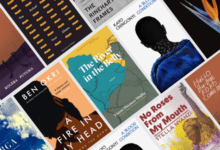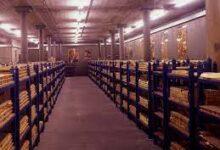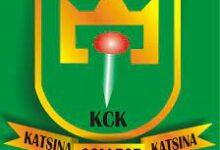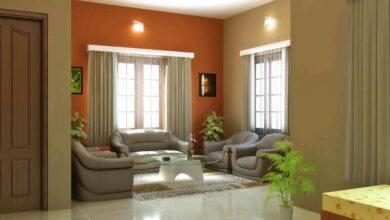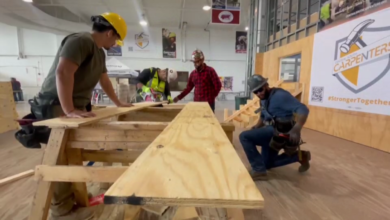
Benin Bronze Castings; Origin of Bronze Casting in Benin Kingdom
Facts about the Benin Bronze Castings. The ancient Benin kingdom is known both locally and internationally for its rich history, art, culture and tradition. One of the most easily recognized symbols of the great kingdom is the Benin bronze castings.
Queen Mother HeadIn ancient times, the Benin bronze castings, collectively referred to as the Benin Bronze Works were made exclusively as a courtly art for the decoration of the palace as well as to celebrate the Oba’s imperial power, commemorate the previous Obas and to idolize the Queen Mother. The bronze casters made images of the faces of past Obas, Queen Mothers, leopards, snakes and also depictions of important events like coronations, festivals and conquests. One of the most popular of the Benin Bronze collections is that of Queen Idia whose ivory pendant was used as the mascot of the Festival of Arts and Culture in 1977 (FESTAC ‘77).
👉 Relocate to Canada Today!
Live, Study and Work in Canada. No Payment is Required! Hurry Now click here to Apply >> Immigrate to CanadaThe Benin Bronze works first got European attention in the 1500’s when Portuguese traders first came to Benin. They were simply amazed by the level of dexterity and technological advancement displayed by the bronze casters in executing their work. It was only until the British invasion of 1897, where artefacts were looted and carried off to Europe that the artistic work of the Benin bronze casters became known worldwide. The artworks caught the attention of artists and art lovers alike.
While a huge number of the works still sits in museums in Europe and America, with the highest number being in the British museum London (700 pieces), a significant number have been sold to private individuals and collectors for huge fees as much as £35,000 per piece.
- History of Benin Bronze Works
The historical account of the origin of bronze casting in Benin has not been definitely ascertained. Some have attached the origin of the art to somewhere outside Africa, based on the fact that the casting techniques used in Benin were too technologically sophisticated to have been originated and developed by the Bini’s at that time but this has postulation has since been dispelled.
Another account has it that the bronze casting as practised in Benin originated from the Oyo kingdom and Ife in Yorubaland. According to this account, the Ooni of Ife sent his son, Ezohe to Benin at the request of Oba Oguola, with the purpose of assisting with the development of Bronze casting in Bini land. After some years, Ezohe decided to return to Ife but he left his son Igueghae behind to continue with the production of bronze works for the Oba. It is widely thought that it was from Igueghae that the present hereditary practitioners got the Igue clan name from.
This account is mostly regarded by historical scholars as “not so true” because the name Ezohe and Igueghae are not Yoruba, but Benin names. It is also faulted because a thorough study of the bronze works that originated from Benin shows that the Benin bronze art works have no cultural, functional or aesthetic relativity with those found in Yoruba land.
Some others still believe that the art of bronze casting was brought to Benin by an immigrant either from Egypt or Sudan. This immigrant came to Benin in search of refuge and the Oba accepted him because of his display of good craftsmanship in sculpturing. He was named Ugiokha by the people. After many decades of staying in Benin, the Oba appreciated his meritorious service by providing a place for him to settle permanently and continue to produce and preserve the bronze works. Although the exact location is not known, this place is believed to be at the present day Igun Street where the art is still actively practised and displayed in numerous galleries.
- The Bronze Casting Process
The Benin casters utilize the lost wax casting technique. The bronze casting as practised in Benin is a labour intensive process which has not changed much over time. The casting begins by mixing red sand with water to create a hard but brittle mud composite in the shape or image of the object to be casted. This initial image is then covered in bees wax to form a wax mould referred to as runner which will also take the shape of the mud mould.
Another layer of mud is then used to cover up the wax mould. This mould is allowed to dry before being held down by coils of copper wire in order to hold it firmly in place. The copper wire is them covered with a thin layer of mud to prevent it from melting during the firing process.
👉 Relocate to Canada Today!
Live, Study and Work in Canada. No Payment is Required! Hurry Now click here to Apply >> Immigrate to CanadaThis contraption is then heated thoroughly until the wax melts completely and drains out of the mould to leave a space between the two layers of mud which is the same shape with the wax.
The bronze is then heated until it gets to a molten state, then it is poured into the mould to fill up the hollow created by the drained out wax, thus adopting the shape of the wax. It is then allowed to cool down until it becomes solid. The bronze caster then breaks off the mud mould to reveal the hollow bronze figure which is then cleaned and polished to give bring out its characteristic shine.
Since the inception of bronze casting in Benin, only those who belong to the Igun clan of Bronze casters are empowered by the Oba to practise the art because of the high esteem which the Oba and people hold the art. It is on record that when Oba Ovonramwen was on exile in Calabar, letters that were sent to him were constantly being intercepted. The only messages he got successfully were those that were sent disguised as coded messages on the figures and images of bronze castings.
The skill is only taught to the male children of the casting family who all belong to the Guild of Benin Bronze Casters. It is not taught to women because of the fear that she might teach the skills to her husband or sons who are not members of the guild.
A visit to Igun Street today will leave any art lover simply awe struck with the sheer beauty of the artworks that are displayed for sale in the various art galleries. Apart from those for sale, the casters also do customized jobs for those who are interested but these jobs cost significantly more than the normal ones.
Watch The Video
The Benin bronze artworks still have the potential to contribute even more to the national and state economy through the production and sale of these artworks but the traditional casters still need more support from both the state and federal government as well as well-meaning individuals in order for them to purchase more state of the art equipment that will improve their output levels.
